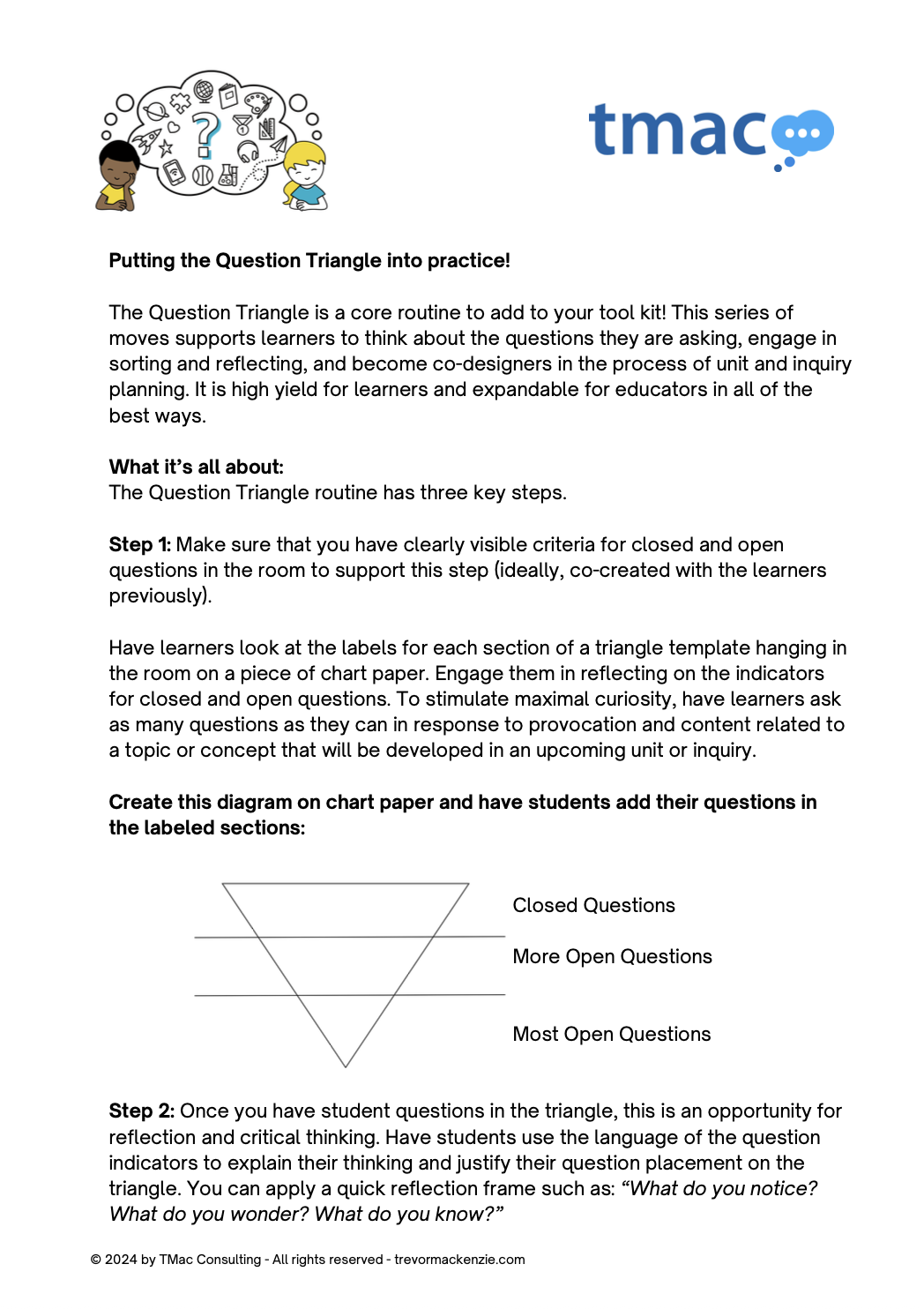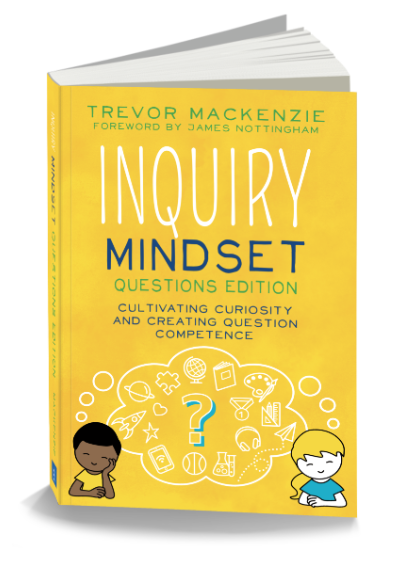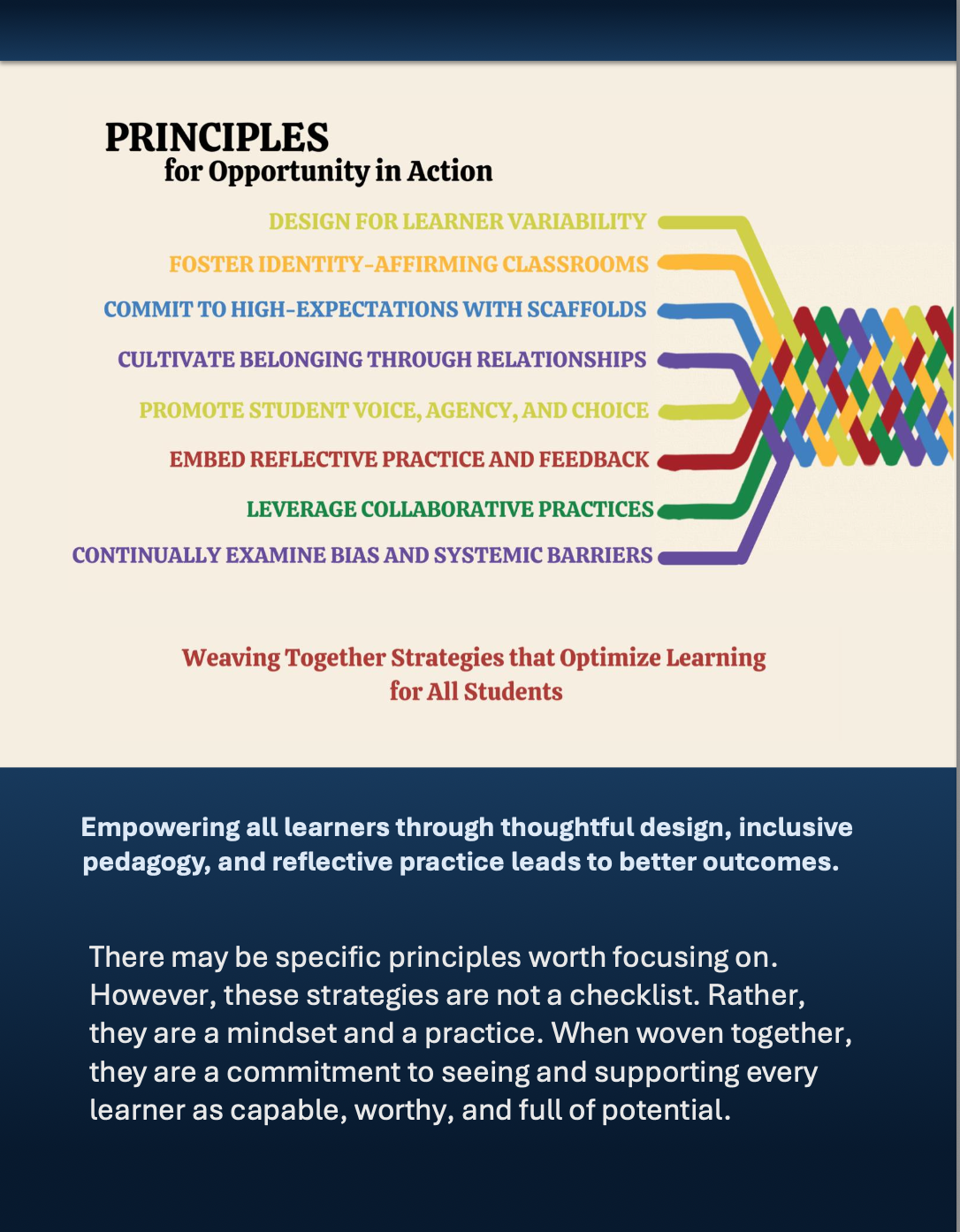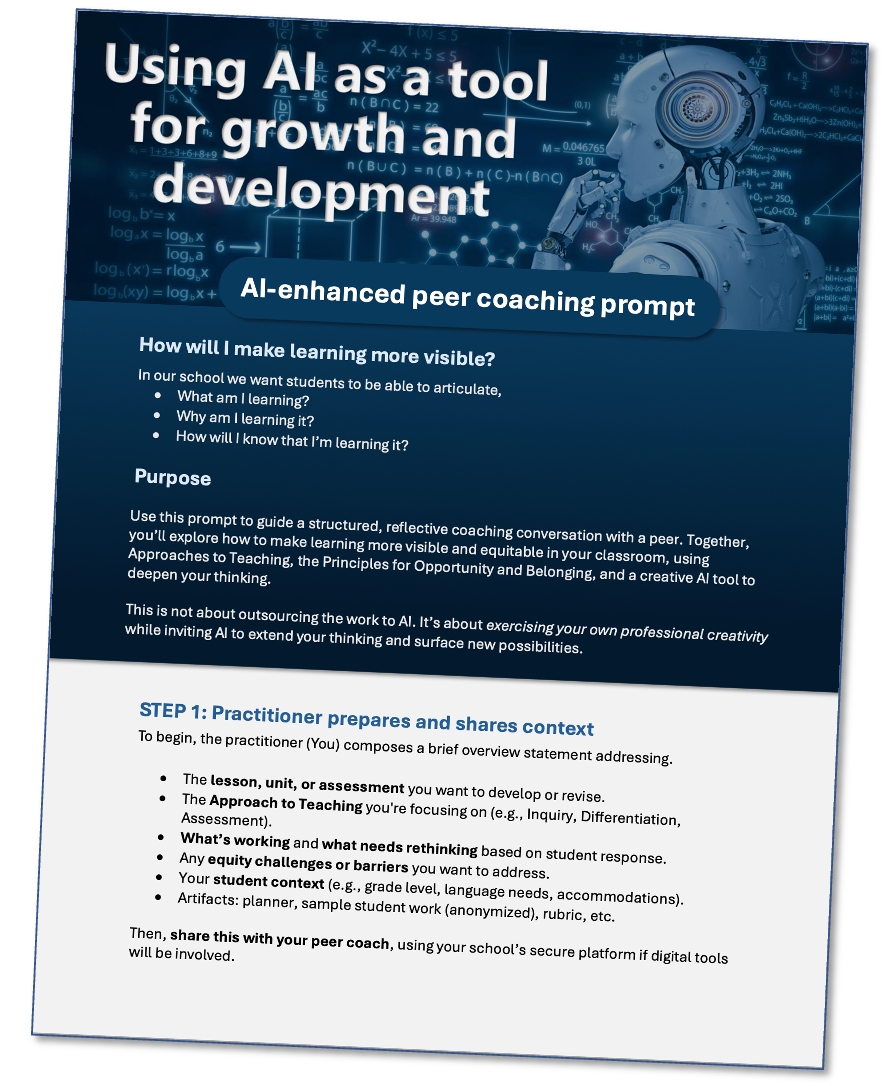Professional Learning Resource Toolkit
Opportunity by Design: Strategies for making the learning visible
Let’s think about the students we serve and the kind of learners they might be because of how the experience the world.
Before we even begin to think about the individual learning differences of students in the classroom, it is important to understand the generational dispositions they bring with them. These transcend many other aspects of their learner profile.
The Question Triangle is a core routine to add to your tool kit! This series of moves supports learners to think about the questions they are asking, engage in sorting and reflecting, and become co-designers in the process of unit and inquiry planning. It is high yield for learners and expandable for educators in all of the best ways.
If you liked the triangle routine, you might like to explore the other 9 routines that can help bring student inquiry to life in your classroom.
Opportunity in Action: 8 Principles for Equitable and Inclusive Education
Every student deserves to thrive in a classroom where they are seen, supported, and challenged. This resource outlines eight practical, future-focused principles that guide teachers in designing learning experiences that are inclusive, identity-affirming, and grounded in high expectations.
Each principle is paired with classroom strategies and reflection prompts to help educators translate values into daily practice—making opportunity visible, and equity actionable.
Use this guide to reflect, redesign, and recommit to the work that only humans can do: cultivating curiosity, belonging, and the courage to grow.
Approaches to Teaching: Designing for Visibility, Belonging, and Deep Learning
To create classrooms where every student feels seen and supported, we must be intentional about how we teach—not just what we teach. The six approaches to teaching described below offer flexible entry points for developing instructional strategies that make learning visible and inclusive.
As you explore these, choose one or two approaches that align with your goals this year. Consider how each one can help students answer three essential questions:
What am I learning?
Why am I learning it?
How do I know that I’m learning it?
Each approach is paired with a guiding equity principle and practical classroom applications to support all learners—especially those who have been historically underserved or who require tailored support.
Whether you’re deepening your practice or just beginning to reflect, let these approaches anchor your next step forward.
What aspect of your practice or your curriculum will you improve this year?
A step-by-step guide to becoming an AI enabled instructional coach
Whether you’re an AI power user or this is your first time opening a GPT tool, you’re exactly where you need to be.
This peer coaching experience isn’t about being tech-savvy. It’s about being learner-centered—and using every tool available to help you reflect, design, and grow. Think of AI as a thinking partner: it can help you generate questions, reframe a challenge, or find creative ways to remove barriers to learning. You’re still in charge. AI simply helps you get there faster—with clarity, curiosity, and courage.
The principles you explored today—equity, visibility, identity, belonging—aren’t one-time goals. They’re daily practices. With the support of your peers and the power of AI, you can keep refining your approach all year long.
You’ve already taken the most important step: choosing to grow. And you don’t have to do it alone.











